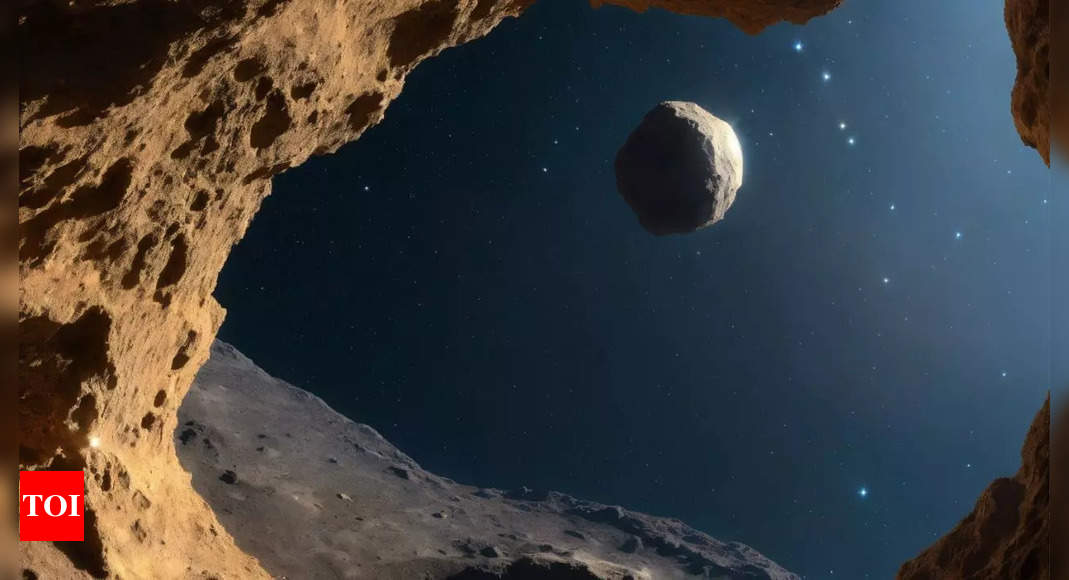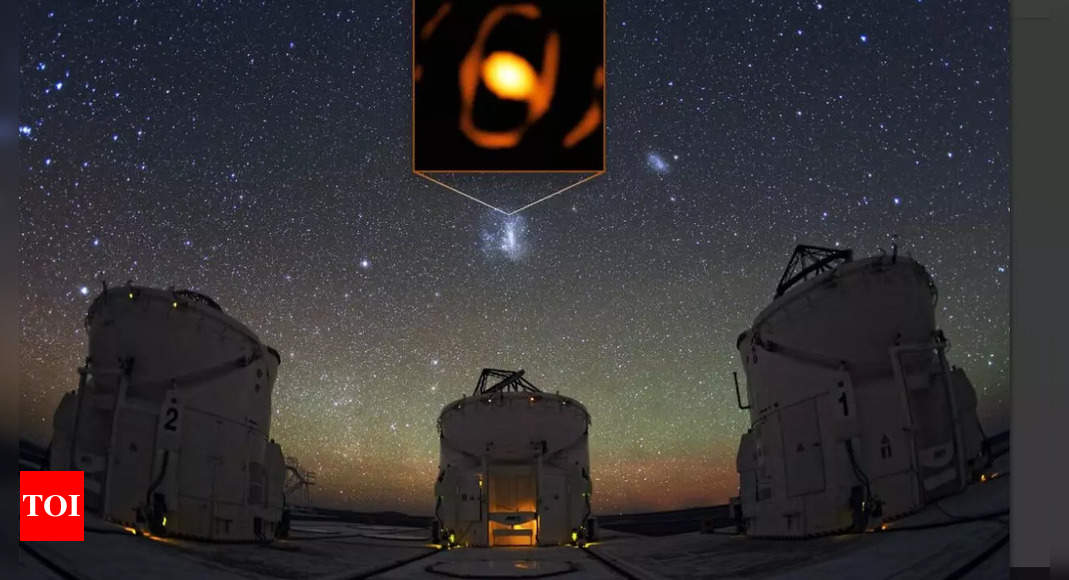
Scientists have discovered the existence of a cave on the Moon, situated in close proximity to the historic landing site of Neil Armstrong and Buzz Aldrin from 55 years ago, the team led by Italian scientists on Monday said that they suspect there could be hundred more caves that may serve as potential house for future astronauts, AP reported.
The cave, which is believed to be of considerable size, can be reached from the Moon’s deepest known pit, located in the Sea of Tranquility, which is 250 miles (400 kilometers) from the spot where Apollo 11 touched down.
The deepest known pit was formed by the collapse of a lava tube, similar to the more than 200 other pits discovered on the lunar surface. In an email, Leonardo Carrer and Lorenzo Bruzzone from the University of Trento expressed their excitement and said, “Lunar caves have remained a mystery for over 50 years. So it was exciting to be able to finally prove the existence” of one, as per AP reports.
The researchers analysed radar data collected by Nasa‘s Lunar Reconnaissance Orbiter and compared the findings with lava tubes found on Earth and the results of their study were published in the journal Nature Astronomy.
The scientists have revealed that the radar data only shows the initial section of the underground cavity. According to their estimates, the cavity is at least 130 feet (40 meters) wide and extends for tens of yards (meters), possibly even further.
The majority of the pits appear to be situated in the ancient lava plains of the moon, as reported by the scientists. There is also a possibility of finding some pits at the moon’s south pole, which is the intended location for Nasa’s astronaut landings in the coming decade. The permanently shadowed craters in this region are thought to contain frozen water, which could serve as a source of drinking water and rocket fuel.
The discoveries indicate the potential presence of hundreds of pits and thousands of lava tubes on the moon. These locations could provide natural shelter for astronauts, shielding them from cosmic rays, solar radiation, and micrometeorite impacts. Constructing habitats from scratch would be more time-intensive and challenging, even when considering the possible need to reinforce the cave walls to prevent collapse, according to the research team.
The rocks and other materials found inside these caves, unaffected by the harsh surface conditions, could offer valuable scientific insights to understand how the moon evolved, especially involving its volcanic activity.
Total 12 astronauts landed on the moon during the Nasa’s Apollo program, beginning with Armstrong and Aldrin on July 20, 1969.
The cave, which is believed to be of considerable size, can be reached from the Moon’s deepest known pit, located in the Sea of Tranquility, which is 250 miles (400 kilometers) from the spot where Apollo 11 touched down.
The deepest known pit was formed by the collapse of a lava tube, similar to the more than 200 other pits discovered on the lunar surface. In an email, Leonardo Carrer and Lorenzo Bruzzone from the University of Trento expressed their excitement and said, “Lunar caves have remained a mystery for over 50 years. So it was exciting to be able to finally prove the existence” of one, as per AP reports.
The researchers analysed radar data collected by Nasa‘s Lunar Reconnaissance Orbiter and compared the findings with lava tubes found on Earth and the results of their study were published in the journal Nature Astronomy.
The scientists have revealed that the radar data only shows the initial section of the underground cavity. According to their estimates, the cavity is at least 130 feet (40 meters) wide and extends for tens of yards (meters), possibly even further.
The majority of the pits appear to be situated in the ancient lava plains of the moon, as reported by the scientists. There is also a possibility of finding some pits at the moon’s south pole, which is the intended location for Nasa’s astronaut landings in the coming decade. The permanently shadowed craters in this region are thought to contain frozen water, which could serve as a source of drinking water and rocket fuel.
The discoveries indicate the potential presence of hundreds of pits and thousands of lava tubes on the moon. These locations could provide natural shelter for astronauts, shielding them from cosmic rays, solar radiation, and micrometeorite impacts. Constructing habitats from scratch would be more time-intensive and challenging, even when considering the possible need to reinforce the cave walls to prevent collapse, according to the research team.
The rocks and other materials found inside these caves, unaffected by the harsh surface conditions, could offer valuable scientific insights to understand how the moon evolved, especially involving its volcanic activity.
Total 12 astronauts landed on the moon during the Nasa’s Apollo program, beginning with Armstrong and Aldrin on July 20, 1969.









